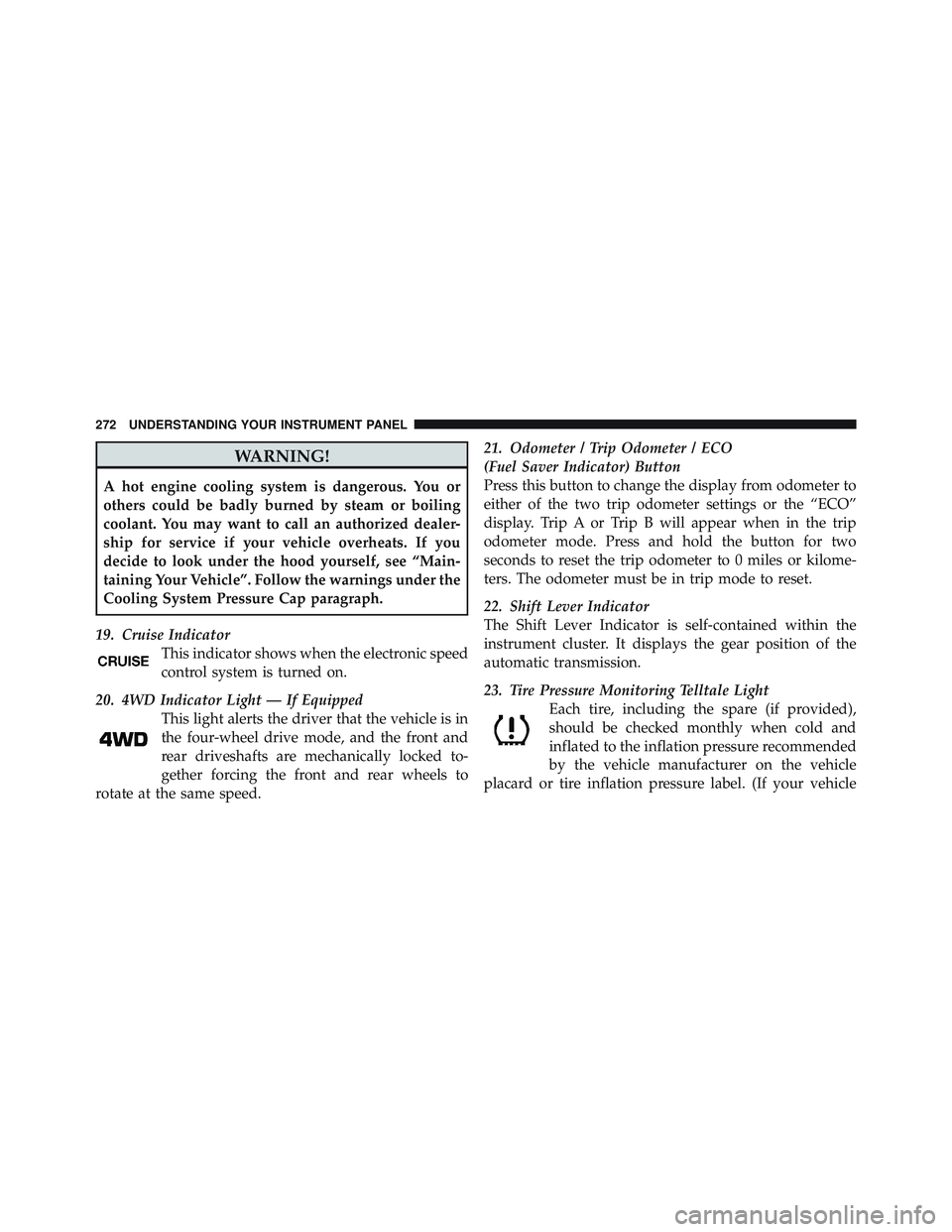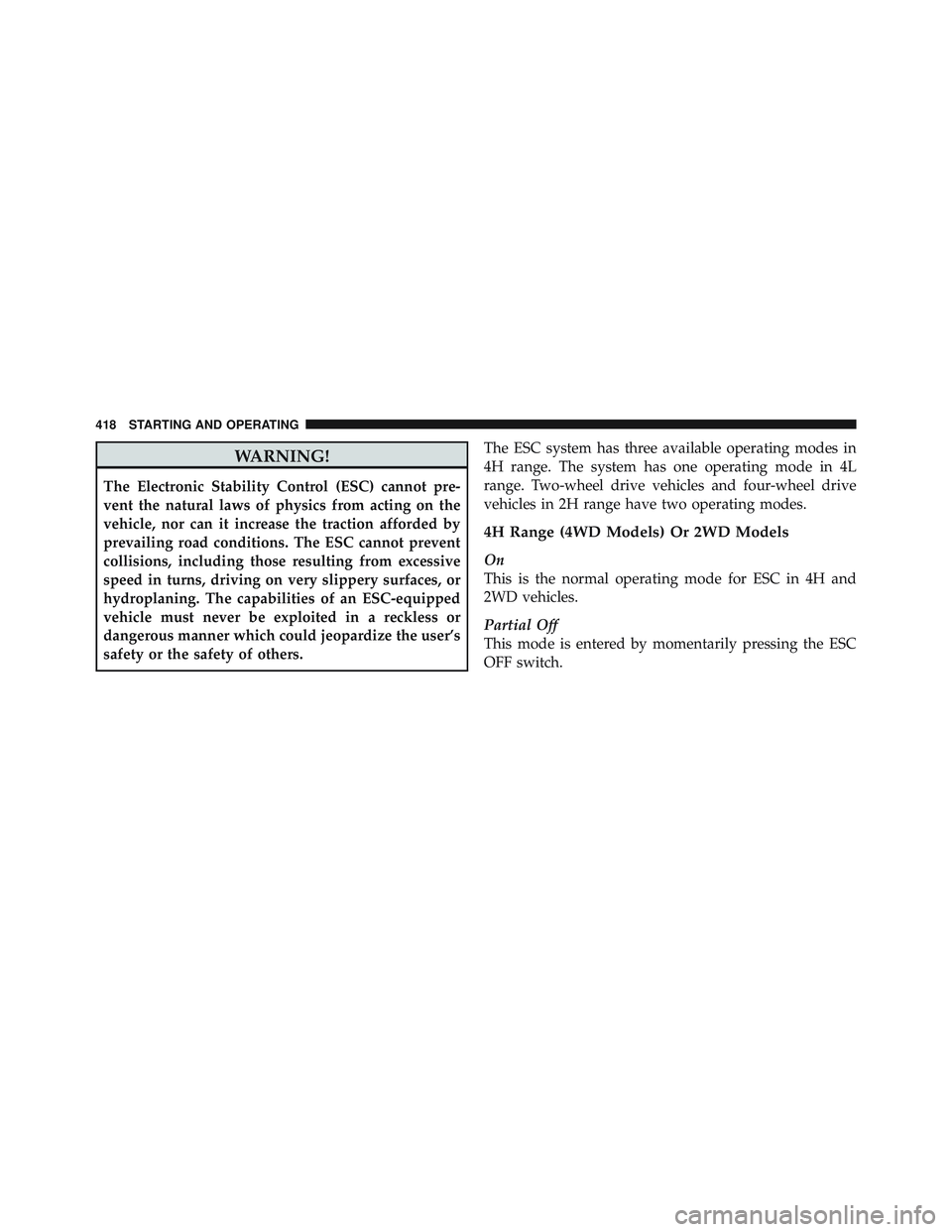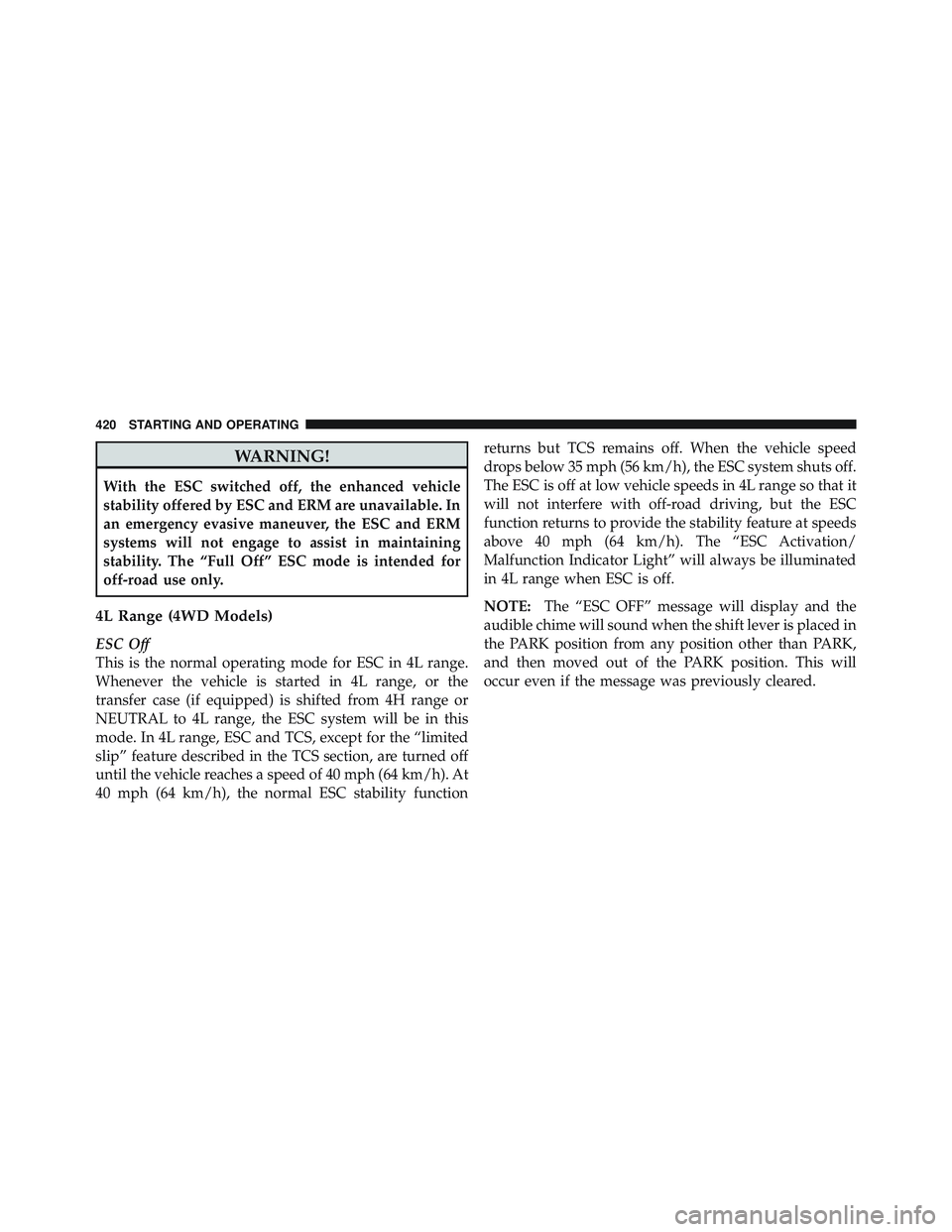4WD JEEP WRANGLER 2011 Owners Manual
[x] Cancel search | Manufacturer: JEEP, Model Year: 2011, Model line: WRANGLER, Model: JEEP WRANGLER 2011Pages: 603, PDF Size: 7.12 MB
Page 274 of 603

WARNING!
A hot engine cooling system is dangerous. You or
others could be badly burned by steam or boiling
coolant. You may want to call an authorized dealer-
ship for service if your vehicle overheats. If you
decide to look under the hood yourself, see “Main-
taining Your Vehicle”. Follow the warnings under the
Cooling System Pressure Cap paragraph.
19. Cruise Indicator This indicator shows when the electronic speed
control system is turned on.
20. 4WD Indicator Light — If Equipped This light alerts the driver that the vehicle is in
the four-wheel drive mode, and the front and
rear driveshafts are mechanically locked to-
gether forcing the front and rear wheels to
rotate at the same speed. 21. Odometer / Trip Odometer / ECO
(Fuel Saver Indicator) Button
Press this button to change the display from odometer to
either of the two trip odometer settings or the “ECO”
display. Trip A or Trip B will appear when in the trip
odometer mode. Press and hold the button for two
seconds to reset the trip odometer to 0 miles or kilome-
ters. The odometer must be in trip mode to reset.
22. Shift Lever Indicator
The Shift Lever Indicator is self-contained within the
instrument cluster. It displays the gear position of the
automatic transmission.
23. Tire Pressure Monitoring Telltale Light
Each tire, including the spare (if provided),
should be checked monthly when cold and
inflated to the inflation pressure recommended
by the vehicle manufacturer on the vehicle
placard or tire inflation pressure label. (If your vehicle
Page 420 of 603

WARNING!
The Electronic Stability Control (ESC) cannot pre-
vent the natural laws of physics from acting on the
vehicle, nor can it increase the traction afforded by
prevailing road conditions. The ESC cannot prevent
collisions, including those resulting from excessive
speed in turns, driving on very slippery surfaces, or
hydroplaning. The capabilities of an ESC-equipped
vehicle must never be exploited in a reckless or
dangerous manner which could jeopardize the user’s
safety or the safety of others.The ESC system has three available operating modes in
4H range. The system has one operating mode in 4L
range. Two-wheel drive vehicles and four-wheel drive
vehicles in 2H range have two operating modes.
4H Range (4WD Models) Or 2WD Models
On
This is the normal operating mode for ESC in 4H and
2WD vehicles.
Partial Off
This mode is entered by momentarily pressing the ESC
OFF switch.
418 STARTING AND OPERATING
Page 422 of 603

WARNING!
With the ESC switched off, the enhanced vehicle
stability offered by ESC and ERM are unavailable. In
an emergency evasive maneuver, the ESC and ERM
systems will not engage to assist in maintaining
stability. The “Full Off” ESC mode is intended for
off-road use only.
4L Range (4WD Models)
ESC Off
This is the normal operating mode for ESC in 4L range.
Whenever the vehicle is started in 4L range, or the
transfer case (if equipped) is shifted from 4H range or
NEUTRAL to 4L range, the ESC system will be in this
mode. In 4L range, ESC and TCS, except for the “limited
slip” feature described in the TCS section, are turned off
until the vehicle reaches a speed of 40 mph (64 km/h). At
40 mph (64 km/h), the normal ESC stability functionreturns but TCS remains off. When the vehicle speed
drops below 35 mph (56 km/h), the ESC system shuts off.
The ESC is off at low vehicle speeds in 4L range so that it
will not interfere with off-road driving, but the ESC
function returns to provide the stability feature at speeds
above 40 mph (64 km/h). The “ESC Activation/
Malfunction Indicator Light” will always be illuminated
in 4L range when ESC is off.
NOTE:
The “ESC OFF” message will display and the
audible chime will sound when the shift lever is placed in
the PARK position from any position other than PARK,
and then moved out of the PARK position. This will
occur even if the message was previously cleared.
420 STARTING AND OPERATING